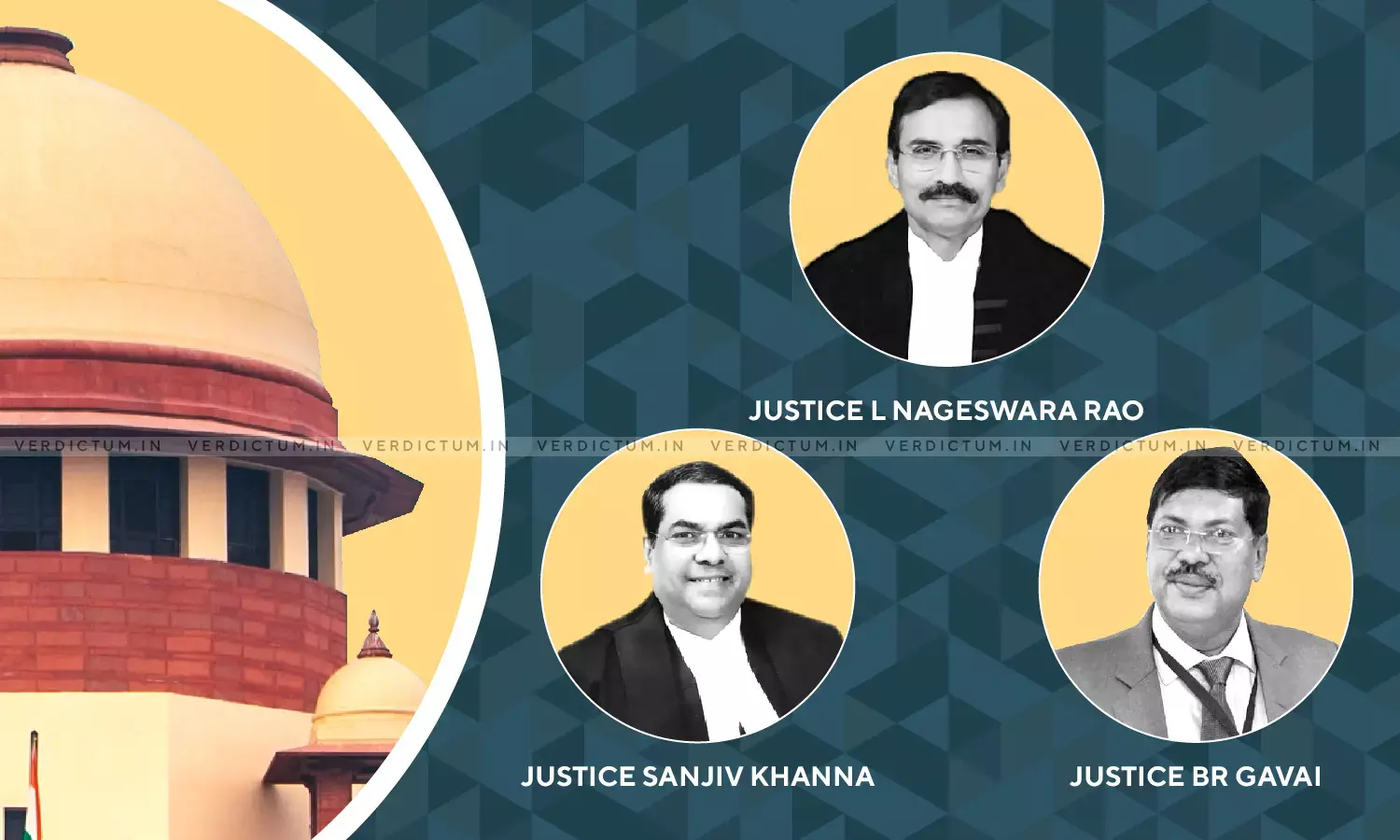Rape Victim's Young Age Is An Insufficient Justification For Imposing Death Sentence – Supreme Court

A three-judge Bench of Justice L Nageswara Rao, Justice Sanjiv Khanna and Justice BR Gavai has held there were sufficient mitigating factors which the Sessions Court and High Court did not consider while pronouncing death sentence to the Appellant-Accused. The Court also held that the low age of the victim is not a sufficient ground for imposing a death sentence.
An appeal was preferred by the Appellant-Accused assailing the judgment of Karnataka High Court which affirmed his conviction under Sections 302, 376, 364, 366A, and 201 of IPC and confirmed the death sentence for the offence under Section 302, rigorous imprisonment for life for the offence under Section 376, rigorous imprisonment for six years and a fine of Rs.10,000/- with default stipulation for the offences under Sections 364 and 366A each, and rigorous imprisonment for two years and a fine of Rs.2,000/- with default stipulation for the offence under Section 201 of the Code.
In this case, the Appellant-Accused was alleged to have committed the act of rape of a 5-year-old girl on the pretext of giving her biscuits. It was further alleged by the eyewitnesses that the accused was spotted with the girl and a gunny bag and were heading towards a stream. The Appellant was accused of at first raping the girl then killing her and dumping her body into the stream.
It was argued by the Prosecution that the case falls under the ambit of 'rarest of the rare,' cases as the Appellant, under the pretext of giving biscuits, committed rape and murder of the victim, and threw her dead body into the stream.
While the Appellant-Accused contended that there existed contradictions and discrepancies in the statement of the witnesses which established that the Prosecution had failed to prove the case against the Appellant beyond a reasonable doubt.
While rejecting the contention of the State that the contradiction should have been put to the witnesses in question in their cross-examination by the defence, the Court held that such contention was untenable and fallacious.
"It is an accepted position that the defence is entitled to rely upon contradictions in ocular evidence furnished by the eye-witnesses and highlight any incongruity between their versions and the prosecution's case. It is not a universally affirmed position that the witnesses must be confronted by the defence to seek advantage of the contradictions," the Bench opined.
Further, the Court observed, "The inconsistency of dates, thus, can be explained as inadvertence or strained memory due to passage of time, not resulting in displacing the case against the appellant that the prosecution has made out."
Recovery of victim's body based on Appellant's disclosure statement
The Court while referring to the statements of the various Prosecution witnesses and the precedent Shanti Devi v. State of Rajasthan, considered the recovery of the body of the deceased at the instance of the accused as a strong circumstance for conviction of the accused.
Additionally, the Court asserted that the post-mortem report and in the inquest panchnama confirmed the date when the crime was committed and fully corroborate and support the ocular evidence of the Prosecution witnesses.
Further, the Bench held, "An overall view of the evidence and witness statements adduced by the prosecution, the chain of circumstances affirmatively establishes the guilt of the appellant."
The Court upheld the decision of the High Court and District and Sessions Court convicting the Appellant of rape and murder.
Issue of Sentencing
The Appellant had contended before the Court there were mitigating factors which the High Court failed to consider such as – i) Appellant was only 25 years old who could be reformed and rehabilitated; ii) Appellant underwent lengthy period in custody; iii) No material to show that option of life imprisonment was unquestionably foreclosed; iv) death sentence should ordinarily be awarded when there is no other alternative left and many other factors.
Against which the State had defended the death sentence on the grounds that the action of the Appellant constituted a grave and uncommon crime endangering the moral fabric of the society.
The Court while referring to various precedents held, "Low age of the victim has not been considered as the only or sufficient factor by this Court for imposing a death sentence."
It was also held by the Court that the act of the Appellant was heinous and required condemnation, but it was not the rarest of rare, so as to require the elimination of the Appellant from the society. "There was nothing on record to indicate criminal antecedents of the appellant or to show that he would be a grave danger to the society."
The Court held, "There is no material shown by the State to indicate that the appellant cannot be reformed and is a continuing threat to the society."
"The young age of the appellant at the time of commission of the offence (23 / 25 years), his weak socioeconomic background, absence of any criminal antecedents, non pre-meditated nature of the crime, and the fact that he has spent nearly 10 years 10 months in prison have weighed with us as other extenuating factors, which add up against imposition of death penalty which is to be inflicted only in rarest of the rare cases," observed the Bench.
Furthermore, the Court opined, "We find sufficient mitigating factors to commute the sentence of death imposed by the Sessions Court and confirmed by the High Court into imprisonment for life, with the direction that the appellant shall not be entitled to premature release/remission for the offence under Section 302 of the Code until he has undergone actual imprisonment for at least thirty (30) years."
In the light of these observations, the Court upheld the conviction of the Appellant-Accused under the Indian Penal Code and partly allowed the appeal.

